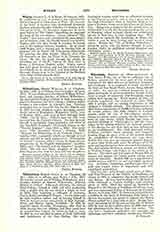

Wilberforce, ROBERT ISAAC, b. at Clapham, December 19, 1802; d. at Albano, near Rome, February 3, 1857. He was the second son of William Wilberforce, and a younger brother of Samuel Wilberforce, Anglican Bishop of Oxford. Educated privately, he entered Oriel College, Oxford, in 1820, and after graduating with a double first, he was elected a fellow of Oriel in 1826, thus becoming a colleague of Newman, Pusey, Keble, and Hurrell Froude. In the same year he took Anglican orders, and on leaving Oxford in 1831 he became rector successively of East Farleigh, Kent, and Burton Agnes, Yorkshire. In 1832 he married Agnes Everilda Wrangham who died in 1834, leaving him two children, and three years later he married Jane Legard, by whom he had no issue. In 1841 he was installed as canon of York Cathedral and Archdeacon of the East Riding. His wide theological reading made him an influential member of the Tractarian party, and it was a great loss to the High Churchmen when in October, 1854, he became a Catholic, being received at Paris on All Saints‘ Day. Being now a widower for the second time, he determined to study for the priesthood on the advice of Manning, whose intimate friend and confidential adviser he had been in their Anglican days. With this view he entered the Accademia in Rome, but within a year he died, having only received minor orders. Besides the “Life of William Wilberforce”, which he wrote with his brother Samuel (5 vols., London, 1838), he published several historical and theological works.
EDWIN BURTON

